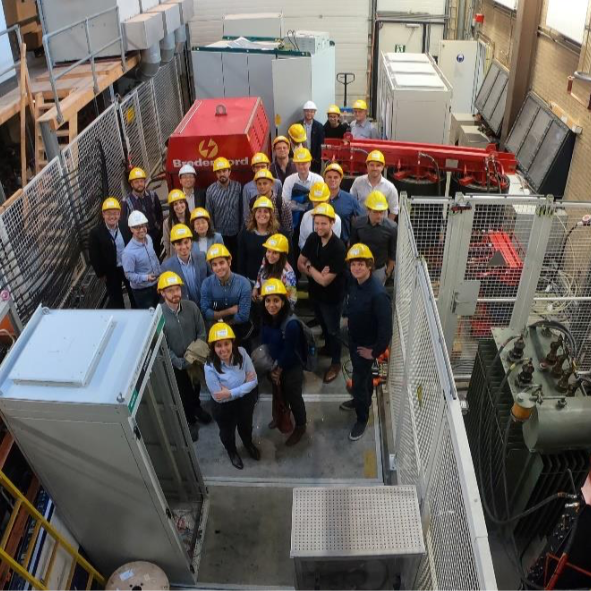Arnhem/Berlin, 24 September 2019 – DNV GL proudly announce the world’s first MW-level wind turbine power converter input-impedance measurement carried out in an independent lab with the commercial partner Ming Yang Smart Energy, Zhongshan, China. A current perturbation measurement setup is prototyped in the DNV GL Flex Power Grid Lab (FPGL) to measure the input-impedance of a MW-level wind turbine power converter and verify the harmonic impedance model that is essential for the management of harmonic resonance risks, especially in the practice of offshore wind farm grid integration. The benefit of the current perturbation method is its scalability to meet the growing size of Device-Under-Test (e.g. wind turbine generator, PV generator etc).
The demonstration took place in context of the EU research project PROMOTioN at 15th August in Arnhem. The PROMOTioN (Progress on Meshed HVDC Offshore Transmission Networks) project aims to tackle technical, regulatory, financial and legal challenges to the implementation of offshore meshed HVDC transmission networks.
The ongoing energy transition is transforming the fossil-fuel based energy system of today into a more sustainable energy system of the future. This transition is further accelerated by the Paris Agreement, which aims to significantly cut down the global CO2 emission levels. The grid-connected Voltage Sourced Converters (VSCs) is the underpinning technology for the success of this energy transition.
The power system stability, once dominated by the synchronous generation units, will be strongly influenced by the grid-connected VSCs. The wide control bandwidth of VSCs therefore demands the industry to investigate harmonic oscillations (i.e. up to 2.5 kHz following the power quality standard EN-50160) in addition to the traditional electro-mechanical and transient stability. Consequently, the wider harmonic stability is of great importance for the stable operation of a future power electronics dominant grid, where controllers of various grid-connected VSCs should be inter-operable without invoking resonances. The dynamic interaction among the power grid and VSCs tend to cause oscillations in a wide frequency range and has recently been reported in both the wind [1] and PV [2] power plants. Similar instability has also been reported in railway power systems [3], leading to the standardization of the input admittance characteristics of concerned power electronics equipment.





























